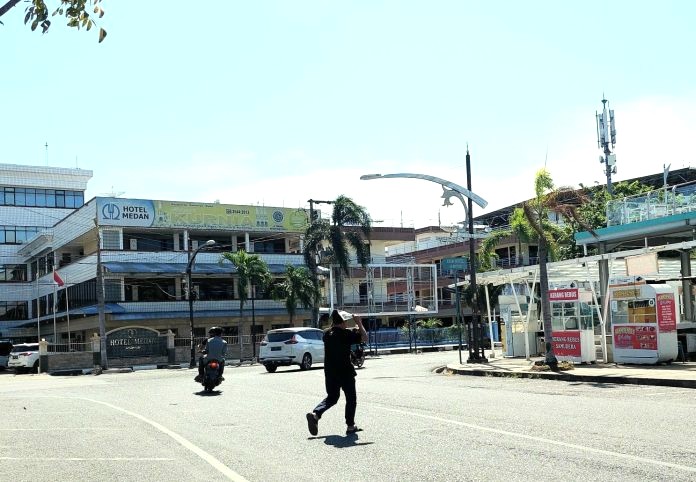Indonesia is currently experiencing a wet dry season, a rare weather condition where rainfall continues during what should be the dry season. While this unusual season brings some showers to different parts of the country, it hasn’t stopped the heat from soaring.
According to the Meteorology, Climatology, and Geophysics Agency (BMKG), several regions in Indonesia have recorded extremely high temperatures, with some areas reaching well above 35 degrees Celsius.
The latest BMKG data from July 7 to July 8, 2025, shows that Aceh Besar recorded the highest temperature in the country at 35.4°C. This makes it the hottest location in Indonesia during that period. North Aceh followed with a scorching 34.4°C, and Pekanbaru in Riau placed third with 34.2°C.
What’s notable is that Jakarta, despite being Indonesia’s busiest and most urbanized city, did not appear in the list of top 20 hottest cities. Instead, the list includes cities across Sumatra, Java, Nusa Tenggara, Kalimantan, Sulawesi, and Papua, indicating that extreme heat is affecting nearly all regions.
Below is BMKG’s list of the 20 cities with the highest maximum daily temperatures according to BMKG Report: July 7-8, 2025:
- Aceh Besar – 35.4°C
- North Aceh – 34.4°C
- Pekanbaru – 34.2°C
- Tapanuli, North Sumatra – 33.6°C
- Sumbawa, West Nusa Tenggara (NTB) – 33.4°C
- Surabaya, East Java – 33.4°C
- Manokwari, West Papua – 33.3°C
- Anambas Islands, Riau Islands – 33.0°C
- Semarang, Central Java – 32.9°C
- Makassar, South Sulawesi – 32.9°C
- Mimika, Central Papua – 32.9°C
- Deli Serdang, North Sumatra – 32.7°C
- Jayapura, Papua – 32.5°C
- Waingapu, East Sumba – 32.4°C
- Sidoarjo, East Java – 32.4°C
- Bima, NTB – 32.2°C
- Kupang, East Nusa Tenggara (NTT) – 32.2°C
- West Kotawaringin, Central Kalimantan – 32.0°C
- Poso, Central Sulawesi – 32.0°C
- Padang Pariaman, West Sumatra – 31.9°C
According to BMKG, this rise in temperature is due to minimal cloud formation caused by the apparent movement of the sun, which is common during the dry season. With fewer clouds, the sun’s heat directly reaches the Earth’s surface, making daytime temperatures soar.
On top of that, urban factors like high population density, traffic pollution, and reduced green areas worsen the situation in many cities, especially during the day. These man-made conditions contribute to what scientists call the urban heat island effect, where cities become much warmer than surrounding rural areas.
BMKG also forecasts that the wet dry season will continue until October 2025, so a mix of rain and heat is likely for the next few months. Residents are advised to stay safe by drinking plenty of water, wearing sun protection, avoiding outdoor activity at peak hours, and keeping up with weather alerts.
As climate patterns shift, understanding how local temperatures change can help communities stay informed and prepared.
Source: RRI, Inilah
Special Photo Credit: Waspada Aceh


